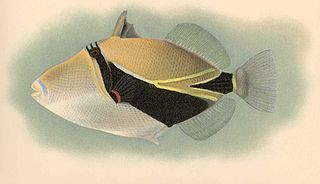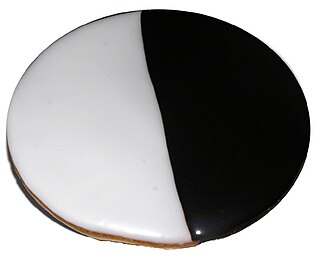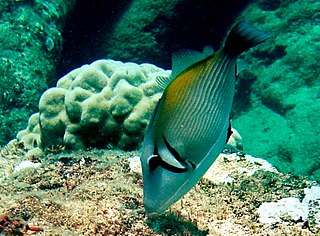
Triggerfish are about 40 species of often brightly colored fish of the family Balistidae. Often marked by lines and spots, they inhabit tropical and subtropical oceans throughout the world, with the greatest species richness in the Indo-Pacific. Most are found in relatively shallow, coastal habitats, especially at coral reefs, but a few, such as the oceanic triggerfish, are pelagic. While several species from this family are popular in the marine aquarium trade, they are often notoriously ill-tempered.

The black triggerfish or black durgon (Melichthys niger), called Humuhumu'ele'ele in Hawaiian, is a blimp-shaped triggerfish with bright white lines running along its dorsal and anal fins. From distance, it appears to be completely black. However, upon closer inspection with good lighting, one can see that it is actually mottled dark-blue/green coloration often with orange toward the front of the head. Black durgons are capable of changing color based on their surroundings.

Pseudobalistes fuscus is a fish belonging to the family Balistidae.

The lagoon triggerfish, also known as the blackbar triggerfish, the Picasso triggerfish, or the Picassofish, is a triggerfish, up to 30 cm in length, found on reefs in the Indo-Pacific region.

The reef triggerfish, also known as the rectangular triggerfish, wedgetail triggerfish or by its Hawaiian name humuhumunukunukuāpuaʻa, is one of several species of triggerfish. It is found at reefs in the Indo-Pacific and is the state fish of Hawaii.

The titan triggerfish, giant triggerfish or moustache triggerfish is a large species of triggerfish found in lagoons and at reefs to depths of 50 m (160 ft) in most of the Indo-Pacific, though it is absent from Hawaii. With a length of up to 75 centimetres (30 in), it is the largest species of triggerfish in its range.

Black-and-white cookies, half-and-half cookies, and half-moon cookies are similar round cookies iced or frosted in two colors, typically with one half vanilla and the other chocolate. They are found in the Northeastern United States and Florida. Black-and-white cookies are flat, have fondant or sometimes royal icing on a dense cake base, and are common in the New York metropolitan area. Half-moon cookies are slightly dome-shaped, have frosting on a fluffy angel cake base, and are common in Central New York and Boston, Massachusetts.

The grey triggerfish or gray triggerfish, is a ray-finned fish in the triggerfish family. The species is native to shallow parts of the western Atlantic from Nova Scotia to Argentina and also the eastern Atlantic, the Mediterranean Sea and off Angola on the west coast of Africa.

The orangeside triggerfish is a species of triggerfish found along the Pacific coast of Central and South America from Mexico to Ecuador. It is also found around the Galapagos Islands.

Sufflamen bursa, also known as the bursa, scythe or boomerang triggerfish, is a triggerfish from the Indo-Pacific. It occasionally makes its way into the aquarium trade. It grows to a size of 25 cm in length. "Scythe" markings on the tail of the triggerfish contain pigments which may change hue from light yellow to dark brown depending on mood of the fish.
The bluethroat triggerfish is a triggerfish from the western Indian Ocean. It is occasionally seen in the aquarium trade. It grows to 22 cm (8.7 in) in length.

Canthidermis is a genus of triggerfishes commonly known as Ocean triggerfishes.

Echinometra viridis, the reef urchin, is a species of sea urchin in the family Echinometridae. It is found on reefs in very shallow parts of the western Atlantic Ocean and the Caribbean Sea.
Sufflamen is a genus of triggerfishes native to reefs of the Indian and Pacific Oceans.

The masked triggerfish is a species of triggerfish usually found living in coastal reefs or in lagoons. The range of depths where these triggerfish can live varies from 8 to 186 m.

The marine wildlife of Baa Atoll consists of marine species living in a circular archipelago in the Maldives, inside the administrative division of Baa Atoll, which is the southern part of Maalhosmadulu Atoll. Baa Atoll was named a biosphere reserve by UNESCO in 2011.
Peniculisa is a genus of marine parasitic copepods in the family Pennellidae.

Lepotrema justinei is a species of lepocreadiid digenean parasitic in the intestine of marine fish. It was described in 2018. This species was not characterised by molecular means but was distinguished from other species of the genus Lepotrema by morphological characteristics. It is the only species with more or less symmetrical testes, and, probably as a result, it tends to be broader than the other species.















